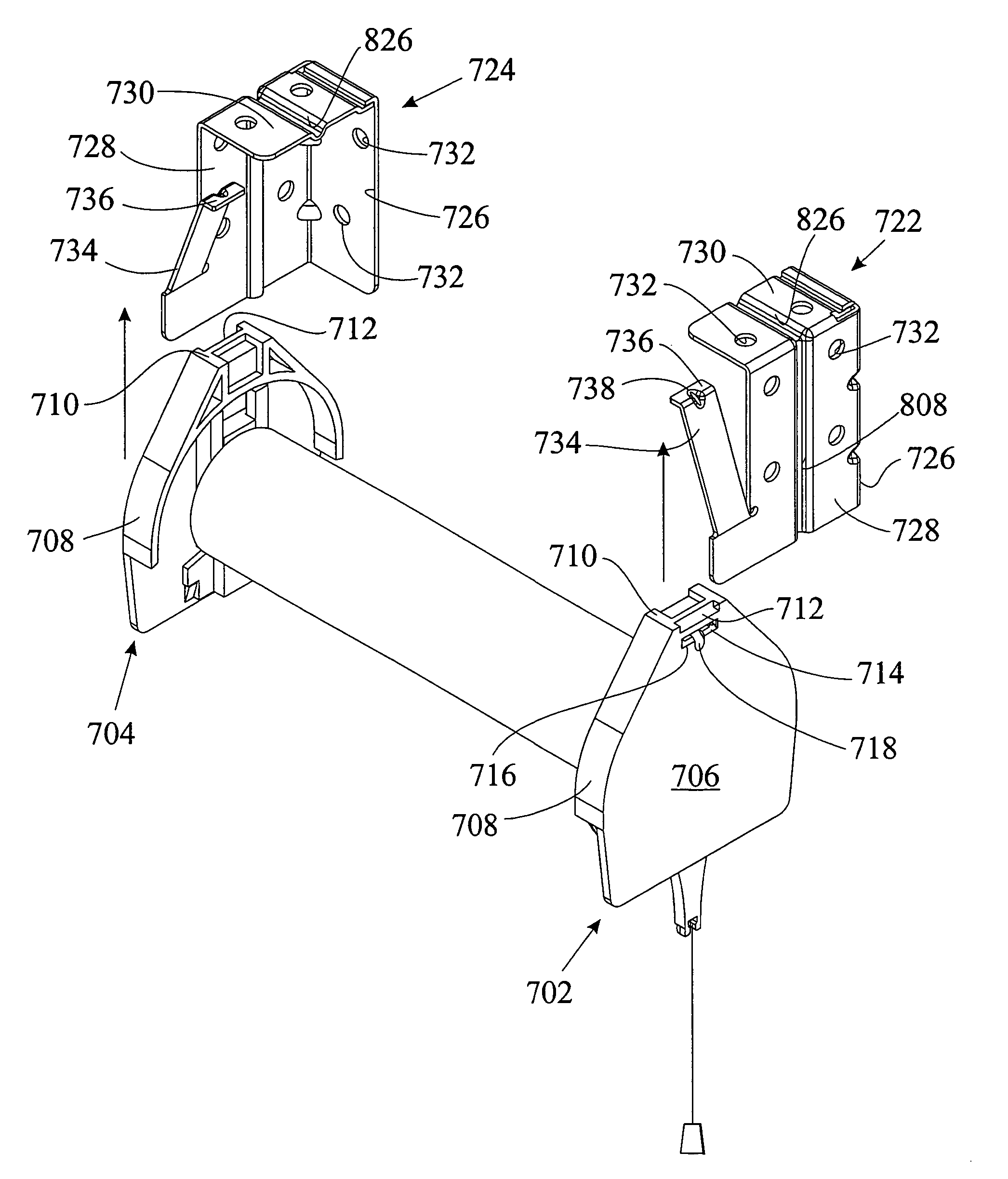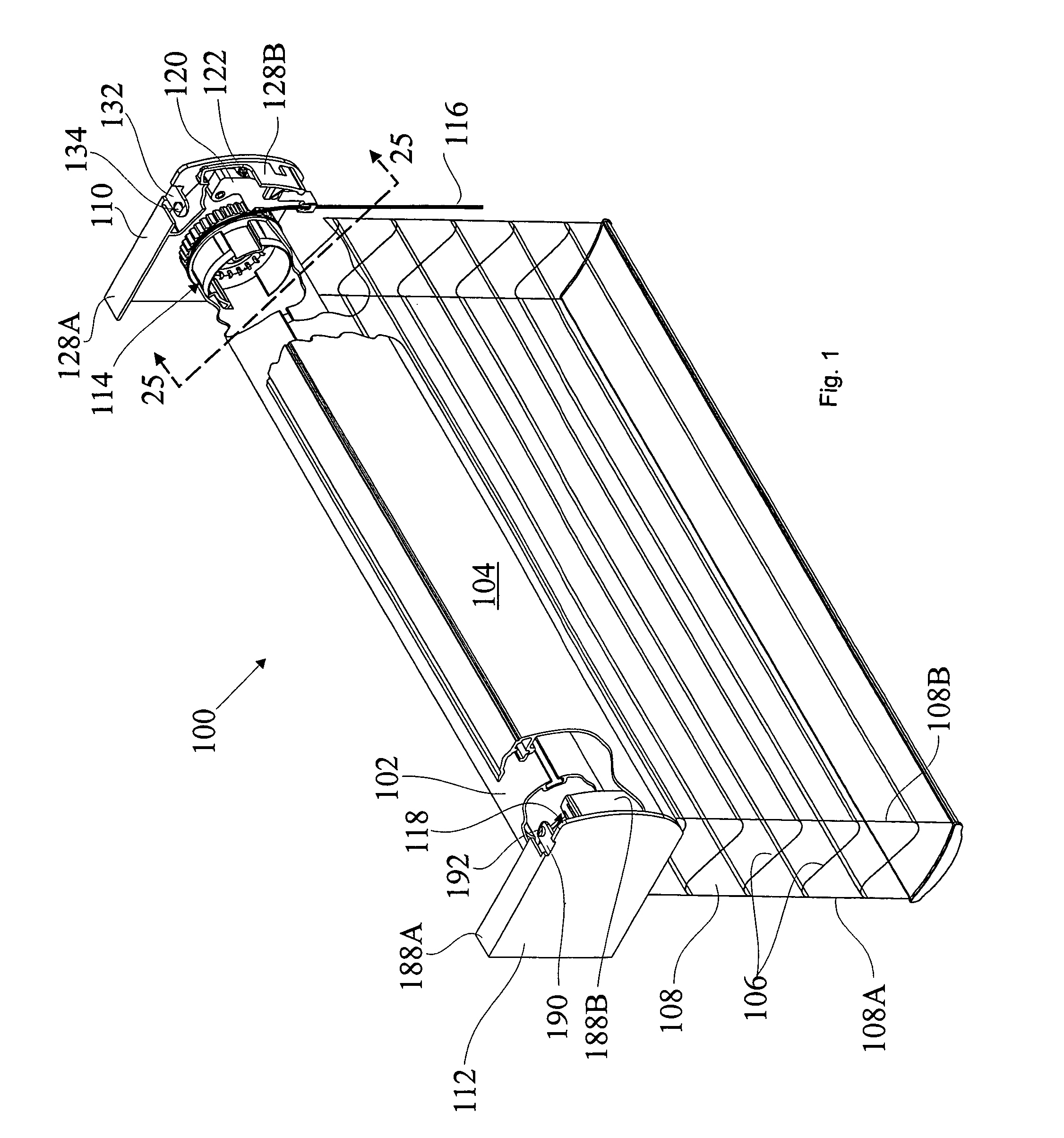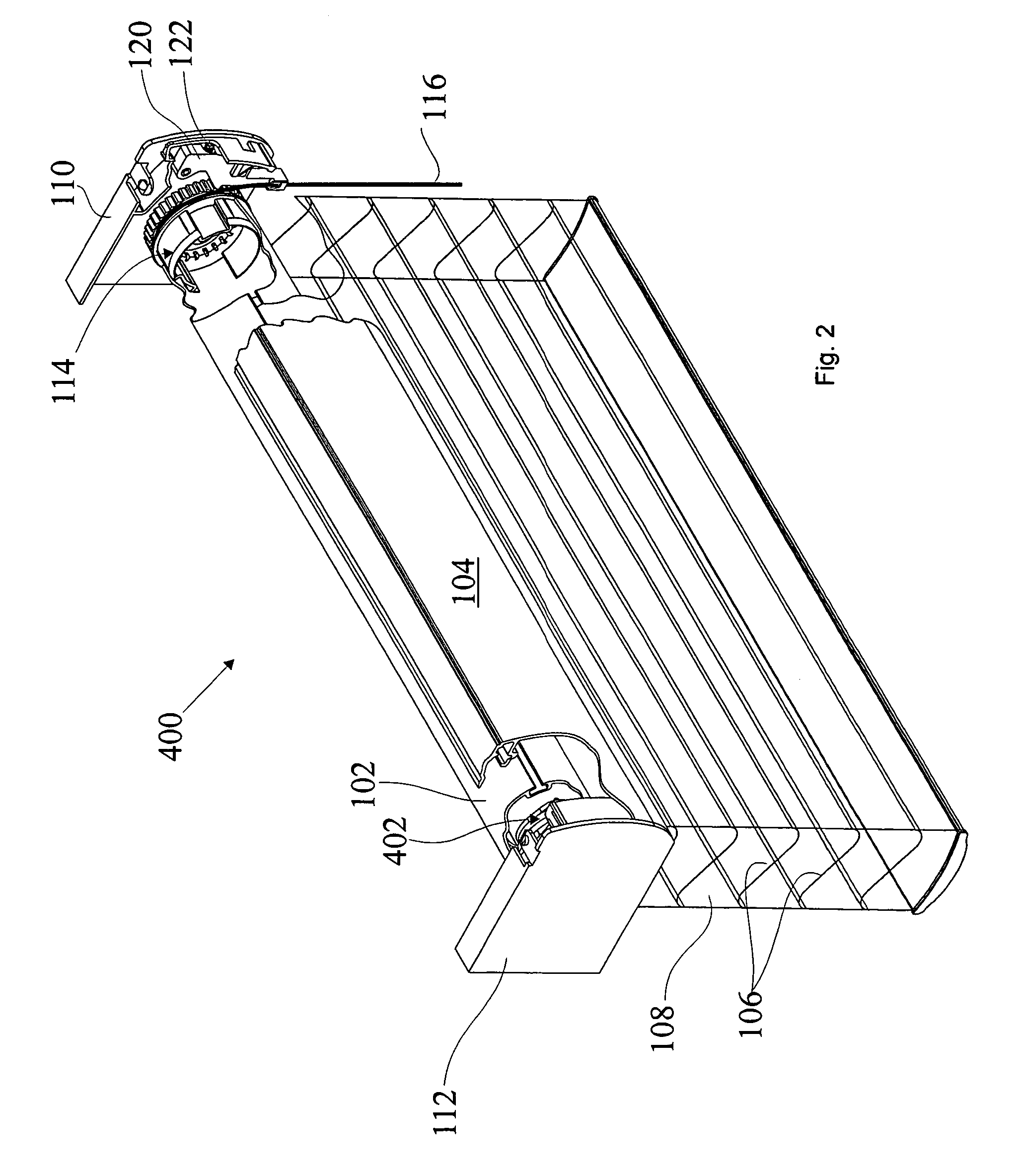Mounting arrangement for coverings for architectural openings
a technology for mounting arrangements and openings, applied in the direction of curtain suspension devices, shutters/movable grilles, door/window protective devices, etc., can solve the problems of cords dragging on the floor and hard to reach
- Summary
- Abstract
- Description
- Claims
- Application Information
AI Technical Summary
Benefits of technology
Problems solved by technology
Method used
Image
Examples
first embodiment
[0111]FIGS. 1 through 6 illustrate various embodiments of the present invention as it relates to horizontal variable light control shades. FIG. 1 is a partially broken away, perspective view of a shade 100 utilizing a spring assist automatic brake 114 (illustrated in further detail in FIGS. 24 through 28) to hold the shade in the desired position once the drive cord is released, and a clock spring assembly 118 (illustrated in further detail in FIGS. 7 and 8) to assist in tilting the shade fully open when the shade is in the fully lowered position.
[0112]The shade 100 of FIG. 1 includes a rotator rail 102, a head rail cover 104, and a plurality of slats 106 suspended from the rotator rail 102 by means of ladder tapes 108 (108A and 108B). In this embodiment, the ladder tapes 108 extend for the full width of the blind. End caps 110 and 112 are used to mount the shade 100 to the architectural opening.
[0113]At the right end (also referred to as the control end) of the blind 100, a spring ...
second embodiment
[0185]FIG. 50 depicts a spring clamp brake 500 made in accordance with the present invention. This brake 500 is identical in its operation and of very similar manufacture to the clamp spring brake 272 of FIG. 11, the main difference being in the spool-to-rail adapter 502.
[0186]As seen in FIG. 51, the spool-to-rail adapter 502 (also called the drive cord spool 502) is similar to the adapter 286 of FIG. 11. It includes an annular disk 546, which defines a groove 548 along its perimeter, where the drive cord 116 winds up onto the drive cord spool 502. A single opening 550 extends from the inner surface 547 of the disk 546 to the groove 548, so the drive cord 116 may be threaded through the opening 550 and tied off with a knot or grommet (not shown).
[0187]A hollow cylindrical projection 552 projects inwardly from the inner surface 547 of the disk 546. The outside surface 558 of the cylindrical projection 552 includes a plurality of radially extending wings 560 sized to slide into and en...
third embodiment
[0189]FIG. 53 depicts a spring clamp brake 600 made in accordance with the present invention. This brake 600 is identical in its operation and of very similar manufacture to the spring clamp brake 272 of FIG. 11, the main difference being in the two-piece, spool-to-rail adapter 602, 604.
[0190]As seen in FIG. 54, the spool-to-rail adapter 602, 604 (also called the drive cord spool) is a two piece design which is similar to the single piece design 286 of FIG. 11. It includes an annular disk 646, which defines a groove 648 along its perimeter, where the drive cord 116 winds up onto the drive cord spool 602. A single opening 650 extends from the inner surface 647 of the disk 646 to the groove 648, so the drive cord 116 may be threaded through the opening 650 and tied off with a knot or grommet (not shown).
[0191]A hollow cylindrical projection 652 projects inwardly from the inner surface 647 of the disk 646. The outside surface 658 of the cylindrical projection 652 includes a plurality o...
PUM
 Login to View More
Login to View More Abstract
Description
Claims
Application Information
 Login to View More
Login to View More - R&D
- Intellectual Property
- Life Sciences
- Materials
- Tech Scout
- Unparalleled Data Quality
- Higher Quality Content
- 60% Fewer Hallucinations
Browse by: Latest US Patents, China's latest patents, Technical Efficacy Thesaurus, Application Domain, Technology Topic, Popular Technical Reports.
© 2025 PatSnap. All rights reserved.Legal|Privacy policy|Modern Slavery Act Transparency Statement|Sitemap|About US| Contact US: help@patsnap.com



